Crafting Soulful Luxury: Jean-Michel Gathy Redefines Hospitality Design with Janu Tokyo
In March 2024, Gathy revealed his latest masterpiece, Janu Tokyo, the highly anticipated flagship hotel for Aman's new sister brand. Janu, which means "soul" in Sanskrit, aims to blend mindful luxury and vibrant social energy. This concept is perfectly captured in the design of the Tokyo property, which combines European flair with understated Japanese elegance. Traditional Sakan wall plastering complements French-inspired interiors, resulting in a dynamic, timeless atmosphere that embodies both the ethos of the Janu brand and Gathy's signature design approach, where contemporary luxury meets cultural heritage.
Jean-Michel Gathy, the visionary behind some of the world’s most iconic luxury hotel interiors, continues to redefine the boundaries of opulence and design. As principal designer at DENNISTON, the architecture firm he founded in 1983, Gathy has established a reputation for crafting spaces that are as meticulously detailed as they are awe-inspiring. His portfolio reads like a who’s who of luxury hospitality, with celebrated projects for global heavyweights such as Mandarin Oriental, One&Only, and most recently, the flagship Aman New York.
In March 2024, Gathy unveiled his latest masterpiece, Janu Tokyo, the much-anticipated flagship hotel for Aman’s new sister brand. Janu, which translates to “soul” in Sanskrit, aims to strike a balance between mindful luxury and a vibrant social energy—a concept that Gathy has effortlessly encapsulated in the Tokyo property. The design merges European flair with understated Japanese elegance, with traditional Sakan wall plastering complementing French-inspired interiors. The result is a dynamic, timeless atmosphere that reflects both the ethos of the Janu brand and Gathy’s signature design approach, where contemporary luxury meets cultural heritage.
The crown jewel of Janu Tokyo is undoubtedly the Janu Suite. Spanning an impressive 284 square meters (3,057 square feet), this suite offers panoramic views of Tokyo Tower and the lush Azabudai Hills Garden Plaza from its two expansive balconies. Inside, the space is thoughtfully laid out with residential-scale living areas, a private study and library, and a spa-like bathroom complete with a double vanity, rain shower, and soaking tub. Every detail, from the seamless flow of space to the artfully curated furnishings, speaks to Gathy’s unmatched ability to combine comfort with grandeur.




















Born in Belgium in 1955, Gathy’s early fascination with architecture was sparked during family trips across Europe, where he developed a keen eye for the nuances of different cultures and landscapes. By 1981, he had relocated to Asia, where his passion for innovative, luxury design found its perfect canvas. Over the past four decades, DENNISTON has become synonymous with cutting-edge hospitality design, and Gathy himself has emerged as a trailblazer in the industry.
Gathy’s impact has not gone unnoticed. His work has been widely published, and he is frequently invited to speak at international conferences. His numerous accolades include his induction into the prestigious "Platinum Circle of Hospitality Design" in 2006, an honor reserved for those who have significantly shaped the world of hotel design. In 2019, Gathy was awarded the title of "Officer of the Order of the Crown" by His Majesty Philippe, King of Belgium, recognizing his outstanding contributions to the field. More recently, in 2022, he received the Outstanding Contribution Award from AHEAD (Awards for Hospitality Experience and Design), further cementing his legacy as a pioneer in luxury design.
With Janu Tokyo, Gathy not only introduces a fresh design language to Japan’s hospitality scene but also reinforces his enduring commitment to innovation and excellence. The property exemplifies his ability to blend cultural influences with modern luxury, creating environments that are as soulful as they are sophisticated. As Janu continues to expand globally, Gathy’s design for the Tokyo flagship sets the tone for a new era of dynamic, design-forward luxury hotels.
A Journey-Enhancing Destination - HOTEL METROPOLITAN TOKYO HANEDA designed by NIKKEN SPACE DESIGN LTD
At Hotel Metropolitan Tokyo, Haneda is more than just a place to stay. The strategic location on the historic runway site of Tokyo International Airport (Haneda Airport) offers a unique vantage point as Japan's world-renowned gateway. This prime location transforms the hotel from a mere transit hub into a captivating destination, immersing guests in the airport's vibrant activities. The mission is to provide a place to stay and enhance your experience, inviting you to see the hotel as more than just a place to stay before or after a flight.
At Hotel Metropolitan Tokyo, Haneda is more than just a place to stay. The strategic location on the historic runway site of Tokyo International Airport (Haneda Airport) offers a unique vantage point as Japan's world-renowned gateway. This prime location transforms the hotel from a mere transit hub into a captivating destination, immersing guests in the airport's vibrant activities. The mission is to provide a place to stay and enhance your experience, inviting you to see the hotel as more than just a place to stay before or after a flight.
The floor plan is not just a layout; it's a captivating concept. Inspired by the idea of a 'perch,' it offers guests a unique space to pause their travels and enjoy a dynamic airport view. The restaurant and bar provide versatile seating arrangements for various occasions, while THE ROOF TOP offers a breathtaking 360-degree view day and night. These perch-like spaces are designed to provide a comfortable spot for guests to relax and enjoy their stay, all within a unique and inspiring environment.
The NIKKEN SPACE DESIGN LTD design team's design concept for the Hotel Metropolitan Tokyo, Haneda, is a unique blend of airport and bar elements. It is designed to appeal to both airport users and a wider audience. The design team has incorporated runway-themed corridors and aviation details throughout the hotel to emphasize its unique airport essence. Additionally, the artwork depicts the industrial vibe and history of the surrounding area, one of Japan's foremost factory districts, adding a unique touch to the overall design.






The design concept combines airport and bar elements to appeal to airport users and a wider audience. The design team from NIKKEN SPACE DESIGN LTD has incorporated runway-themed corridors and aviation details throughout the hotel to emphasize its unique airport essence. The artwork depicts the industrial vibe and history of the surrounding area, one of Japan's foremost factory districts.
The hotel features artworks inspired by genuine aircraft parts and route maps, with some pieces reimagined from locally manufactured industrial products. But that's not all. The hotel occasionally hosts aviation-related exhibitions in collaboration with Japan Airlines Co., Ltd. This unique partnership allows both parties to showcase the area's appeal and enhance guest experience with exclusive insights into the aviation world.
HOTEL METROPOLITAN TOKYO HANEDA is one of the Sky Design Awards Shortlisted Project*
For more information, please visit: https://nspacedesign.co.jp/
Photo Credit: Kenji MASUNAGA
Design Team | Designer Profile
DESIGNART TOKYO 2024 UNDER 30: Celebrating Emerging Young Creators
Tokyo, renowned as one of the world's most culturally diverse cities, is set to host Japan's largest and most prestigious design and art festival: DESIGNART TOKYO. This highly anticipated event will showcase various genres, including design, art, interior design, and fashion, offering a platform for creativity and innovation. The festival's "UNDER30" program is a highlight, featuring five talented creators under 30. These individuals have been selected for their exceptional potential and are poised to become the next stars in the design and art world.
Tokyo, renowned as one of the world's most culturally diverse cities, is set to host Japan's largest and most prestigious design and art festival: DESIGNART TOKYO. This highly anticipated event will showcase various genres, including design, art, interior design, and fashion, offering a platform for creativity and innovation.
The festival's "UNDER30" program is a highlight, featuring five talented creators under 30. These individuals have been selected for their exceptional potential and are poised to become the next stars in the design and art world. The UNDER30 program consistently generates significant interest, serving as a launchpad for emerging talents and offering insight into the future of creative industries.
From left to right: AAAQ ©Andraditya Dhanu Respati / Hiroto Ikebe photo by Kodai Mizuguchi / HOJO AKIRA / Saki Takeshita ©Yuki Kawazoe / Straft (in alphabetical order)
AAAQ Creative Unit Selected by Hiroshi Koike/ NON-GRID
photo by Atsuro Miyako
Meet AAAQ, a dynamic creative unit formed by product designer and producer Atsuro Miyako and UI designer So Ohta. Established in 2021 after their graduation from Chiba University, AAAQ is based in Tokyo and has rapidly gained recognition for their innovative approach to design.
AAAQ’s philosophy is rooted in the continuous cycle of creation and inquiry, encapsulated by their guiding principle: "creating, creating, and creating answers to generate new questions." Their work is characterized by a deep sensitivity and thorough research, often exploring the unseen forces that shape our world and our unconscious interactions with them.
One of the standout phenomena they investigate is "photoelasticity," which vividly visualizes the invisible force of stress. At DESIGNART TOKYO 2024, AAAQ will present "Visible Stress," a groundbreaking work that leverages photoelasticity to reveal the intricate textures of light created by stress. This installation invites viewers to reconsider their surroundings and their own perceptions, unveiling a hidden world of beautiful, potent forces that typically go unnoticed.
Hiroto Ikebe (Textile Artist / Designer) Selected by Astrid Klein&Mark/Klein Dytham architecture
「MAYUGOMORI」FFP© photo by Yasunari Kikuma
After graduating with honours from Tama Art University, where he majored in Textile Design, this visionary artist views fabric as a "soft fossil" that preserves the memories of various cultures, customs, and beliefs. He conducts detailed fieldwork to unravel the memories and contexts associated with materials and techniques from diverse regions. He uses this knowledge to create unique textile designs and artworks that demonstrate his innovative experimental approach.
He focuses on the declining traditions of sericulture that have historically supported Japanese livelihoods. He explores the intricate relationships between "materials" and "producers" from the interaction between humans and silkworms. By reconstructing this relationship, he has developed the "COCOON ANATOMY" garments crafted from silkwaste. These innovative pieces represent a new production process that reimagines traditional methods.
The "COCOON ANATOMY" collection showcases our dedication to sustainable design and will be a prominent feature at DESIGNART TOKYO 2024. This revolutionary approach to textile design not only pays homage to the esteemed tradition of Japanese sericulture but also revitalizes it. Through the exhibition of these pioneering pieces, we aim to encourage our audience to recognize the profound link between culture and craftsmanship and envision a sustainable future for traditional arts.
HOJO AKIRA (Designer) Selected by Shun Kawakami / artless Inc.
This talented designer graduated from Kanazawa College of Art with a major in Product Design and currently works in Tokyo. They work both as in-house designers and freelancers, focusing on mass-produced products. Their design philosophy involves analyzing and improving mass production processes, emphasizing structure and joining methods.
The thought-provoking exhibition "What is the Essential Structure?" will explore the discomforts caused by the typical distortions of mass-produced items. The exhibition will encourage visitors to consider whether these distortions are inherent and what the true essence of a product is. At the core of this exploration are his uniquely designed "sofas," which embody his quest for answers and reflect his deep contemplation of structural integrity.
"Through his work, he aims to communicate these reflections to a broader audience, proposing new values and perspectives on product design.
Saki Takeshita (Designer) Selected by Akio Aoki/ MIRU DESIGN
This versatile designer, a Musashino Art University's Department of Industrial, Interior, and Craft Design graduate, has left a mark in various domains, from guitar effects to interior products. Based in Tokyo, she emphasizes the intricate relationship between objects, people, and spaces and brings a hands-on approach to her creative process.
She will unveil "Eeyo," a captivating exploration of material transformation. This work uses balsa wood, renowned as the world's lightest wood. By meticulously dyeing the wood and exposing it to nearly 200 degrees of hot air, she achieves a dynamic change in colour and a unique graphic representation. This intriguing method allows for a novel form of graphic processing, enhancing the natural grain and texture of the wood by varying the dyeing time and heat application to alter the wood's colours and patterns.
"Eeyo" can be applied to surfaces with uneven textures, curves, and three-dimensional objects, showcasing a new expressive technique in wood product design. By integrating this innovative process, she pushes the boundaries of traditional wood design and offers a fresh perspective on the interaction between materials and craftsmanship.
Graduated from the Department of Industrial, Interior and Craft Design at Musashino Art University. Engaged in a wide range of design work from guitar effects to interior products, creating and presenting work while based in Tokyo. With a focus on the relationship between objects, people, and spaces, she values the process of thinking and creating by hand while interacting with materials.
She will exhibit the work “Eeyo”, which involves dyeing balsa wood, known as the lightest wood in the world, and then exposing it to hot air at nearly 200 degrees, changing the color and creating a graphic representation. A mysterious phenomenon where, by varying the dyeing time and the application of heat, you can change the colors and patterns. The method allows graphic processing of surfaces with natural grain and texture, including those with uneven surfaces, curves, and of three-dimensional objects. This is a new expressive technique in wood product design.
Straft (Artist) Selected by OkisatoNagata / TIMELESS
Meet Straft, a creative craft unit founded by Tamaki Ishii and Kazuma Yamagami. Both are graduates of Tokyo Zokei University with degrees in Industrial Design. Ishii and Yamagami are based in Tokyo, where they use their skills to create innovative works that combine traditional styles with contemporary sensibilities.
Straft primarily works with rice straw, a material with deep cultural significance in Japan. Traditionally used in roofs, walls, and daily tools, rice straw is also a revered object of prayer. At DESIGNART TOKYO 2024, Straft will showcase its "NEST" exhibition, highlighting rice straw's spiritual and cultural significance beyond its practical uses.
Their signature piece, "TORI," exemplifies this ethos by expressing the inherent Japanese view of nature shaped by centuries of rice cultivation. "TORI" aims to capture the essence of spiritual richness and the harmony between humans and nature, a concept deeply rooted in Japanese tradition and increasingly relevant today.
Join us at DESIGNART TOKYO 2024 to experience Straft's "NEST" and witness how Ishii and Yamagami elevate rice straw from a mere resource to a powerful cultural and spiritual connection symbol. Through their work, Straft invites us to reflect on living in harmony with nature and rediscovering its spiritual richness.
Theme: Reframing: the Beginning of a Shift
Period: 10 days from Friday, October 18 to Sunday, October 27, 2024.
Area: Omotesando, Gaienmae, Harajuku, Shibuya, Roppongi, Hiroo, Ginza, Tokyo station area
Organizer: DESIGNART TOKYO COMMITTEE
Founders: Akio Aoki (MIRU DESIGN), Shun Kawakami (artless Inc.), Hiroshi Koike (NON- GRID), Okisato Nagata (TIMELESS), Astrid Klein & Mark Dytham (Klein Dytham architecture)
Official website: https://designart.jp/designarttokyo2024/?lang=en
DESIGNART TOKYO 2024 KEY VISUAL STAFF CREDIT
Photographer:Masaki Ogawa
Design & ArtDirection:artless
Direction : DESIGNART TOKYO COMMITTEE
A story of living in “Craft Comfort” in Tokyo, Japan
The balance of living in a natural environment and the surrounding community, especially in R100 Tokyo Japan. Each house holds a story of its inhabitants; a real life scene with an underwritten script. The following is from a series of short stories that depict scenes from the enriched lifestyles of the residents of R100 TOKYO. In this installment, we would like to give you a peek at the story of our home.
Text by Miki Numata | Translation by Suzi Yamaguchi | Photographs by Teruaki Kawakami, Takuya Furusue
Recipe & Styling by Saiko Hashimoto | Courtesy by R100 Tokyo
The Comforts of home
Each house holds a story of its inhabitants; a real life scene with an underwritten script. The following is from a series of short stories that depict scenes from the enriched lifestyles of the residents of R100 TOKYO. In this installment, we would like to give you a peek at the story of our home; the inhabitants are my wife, who is an aromatherapist, and me, an owner of an IT company, along with our treasured Japanese folk art and old household items lovingly exhibited. This first scene is a weekend afternoon where we have the pleasure of entertaining guests. We are surrounded by my wife’s delicious vegan cuisine and enjoying the serenity of the moment. A clock ticks softly in the background while a large MINO, a traditional Japanese straw garment hanging ornamentally in the living room appears to be watching over the gathering.
Balance Living: Boosting Happiness and Creativity
Weekend lunch with a friend and his wife
My wife, inspired, suddenly suggests, “shall we invite someone to have lunch with us on Sunday?” I had not cleaned the house since the traditional end of the year cleaning (in Japan), so I thought it would be a good idea to do so, and at the same time, I could also organize my study, killing two birds with one stone.
My wife has recently started to learn how to cook vegan cuisine. Her hobbies have apparently expanded from aromatherapy, her main business, to include dyeing and weaving with plant dyes, cooking with natural ingredients, and making sweets.
In the past year I have been working from home more and more, so we have been spending more time together than ever before. Perhaps my wife is getting a bit fed up with this, but I am grateful for the change of pace, and it has a positive (and delicious) effect on me!
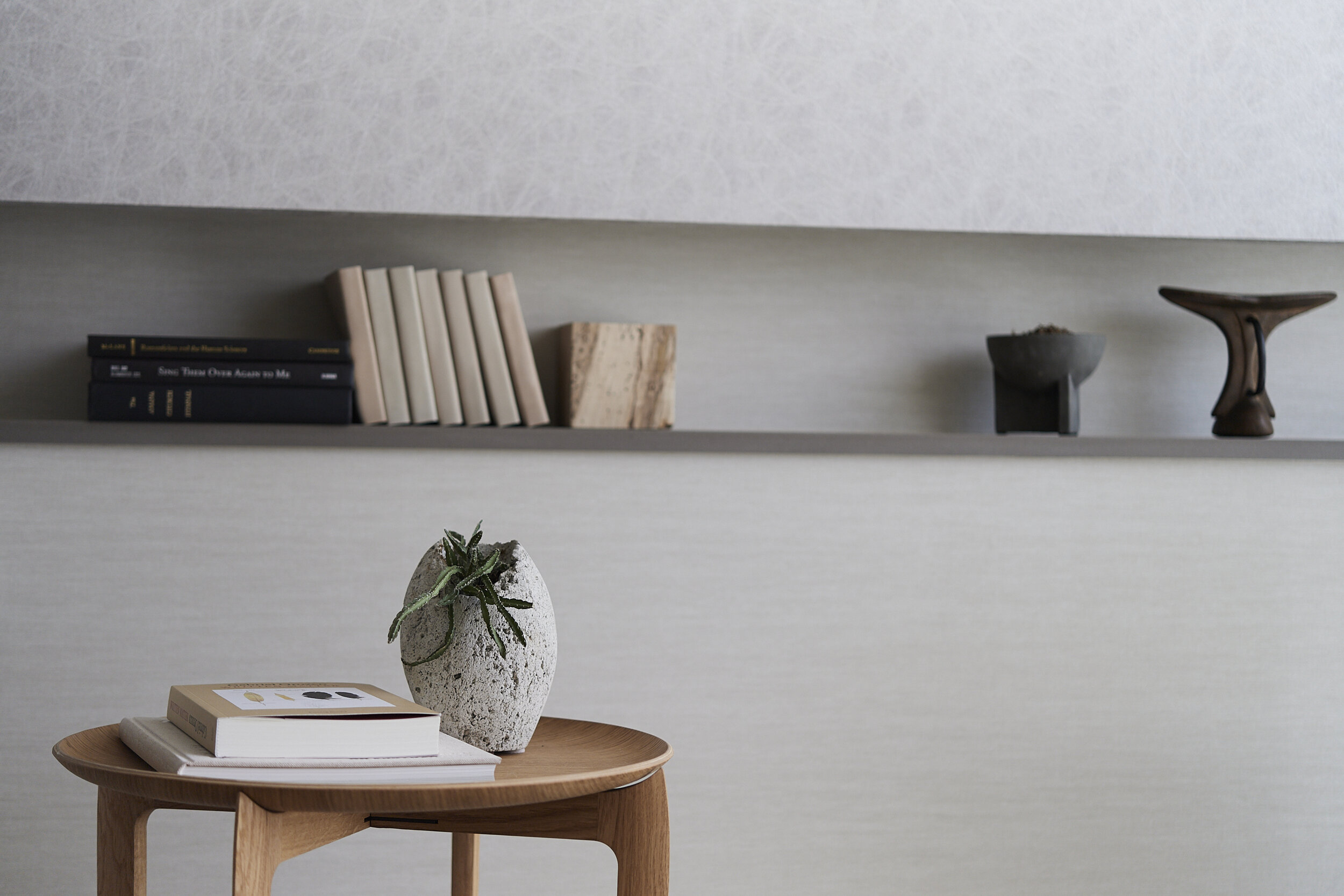

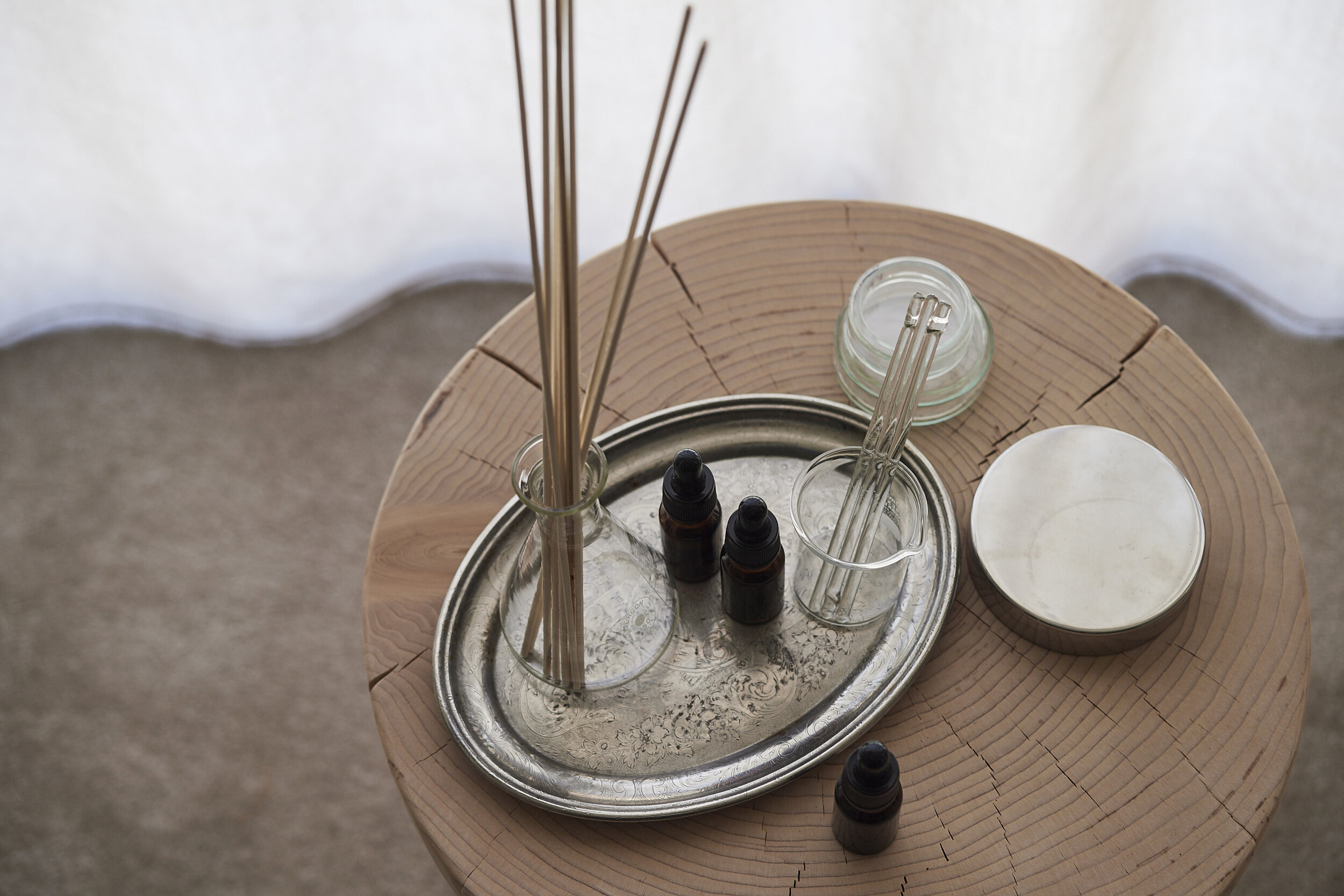
“I have to start with a welcome fragrance", she excitedly announces, taking over the bedroom in the morning to do what is in my opinion a chemical experiment. It is her theory that the first thing to welcome a guest is the fragrance.
“There, it's done! Bergamot, mint and lemongrass for early summer,” she notes. “Wow, that's refreshing. And it also seems delicious,” I chime in, swept up in her enthusiasm. “Yes, that's important!” she calls back pleased with herself.
The vegetables we order weekly from the farmer have arrived and they are clearly freshly harvested and fragrant. It was a pleasant surprise for me to be able to really feel the seasons just by the contents of this regularly delivered box, as prior to this time, I was mainly facing a computer in an office in the middle of the city.
“Excellent vegetables! Now I'm feeling inspired, so let's get cooking,” chirps my wife.
The aroma coming from the kitchen smells wonderful. Vegetables, herbs, spices and aromas combine to make me feel like I'm in a foreign country.
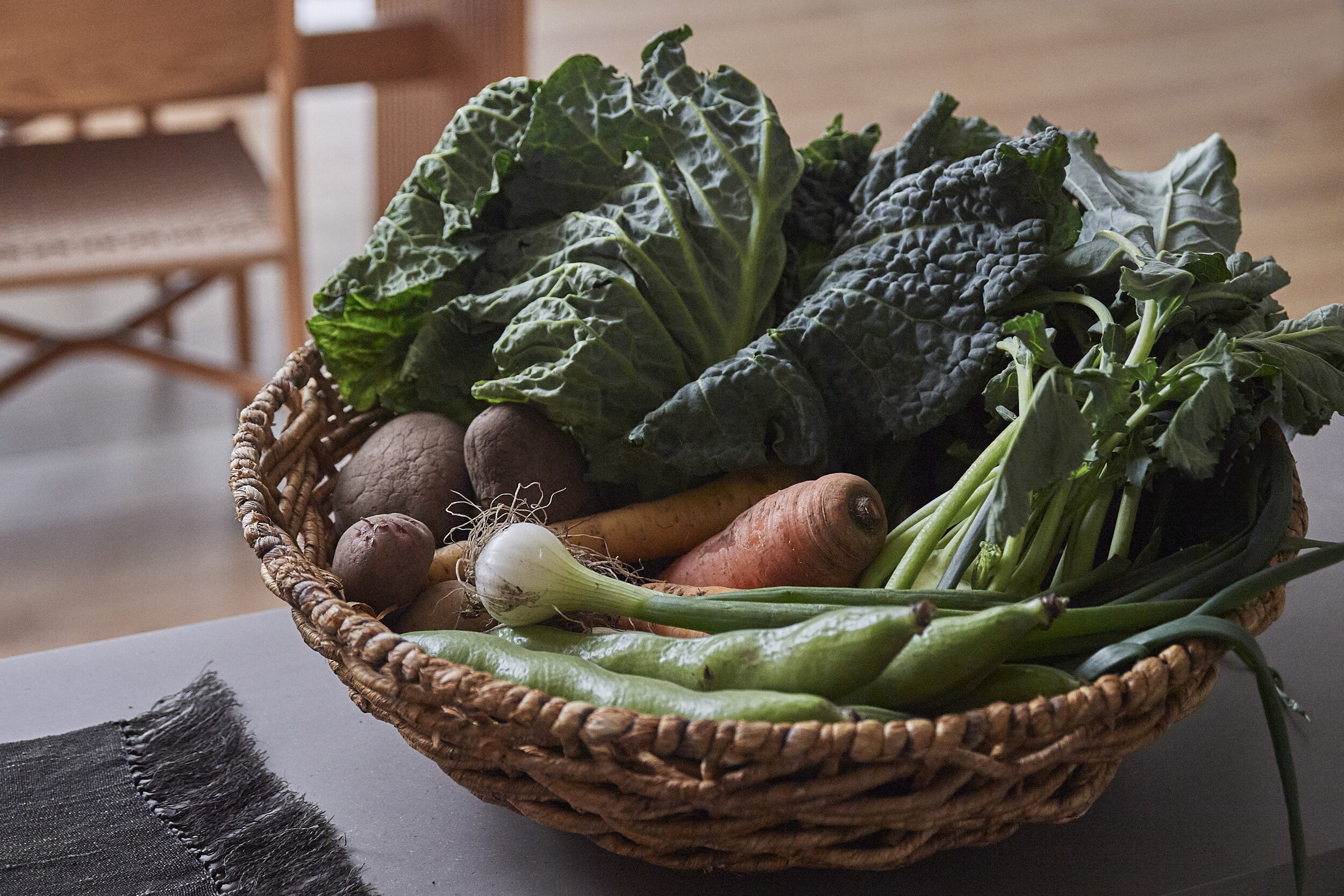

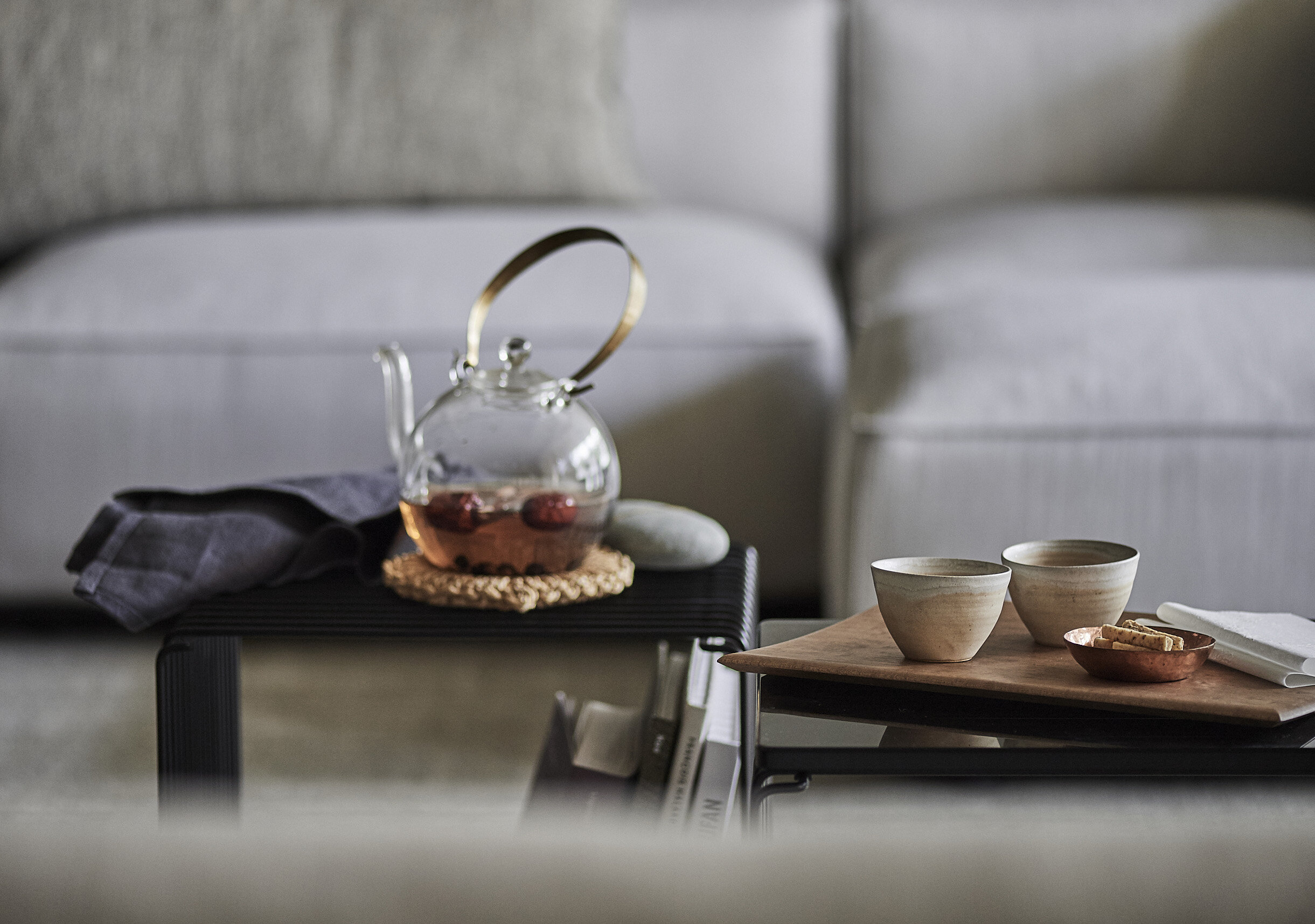
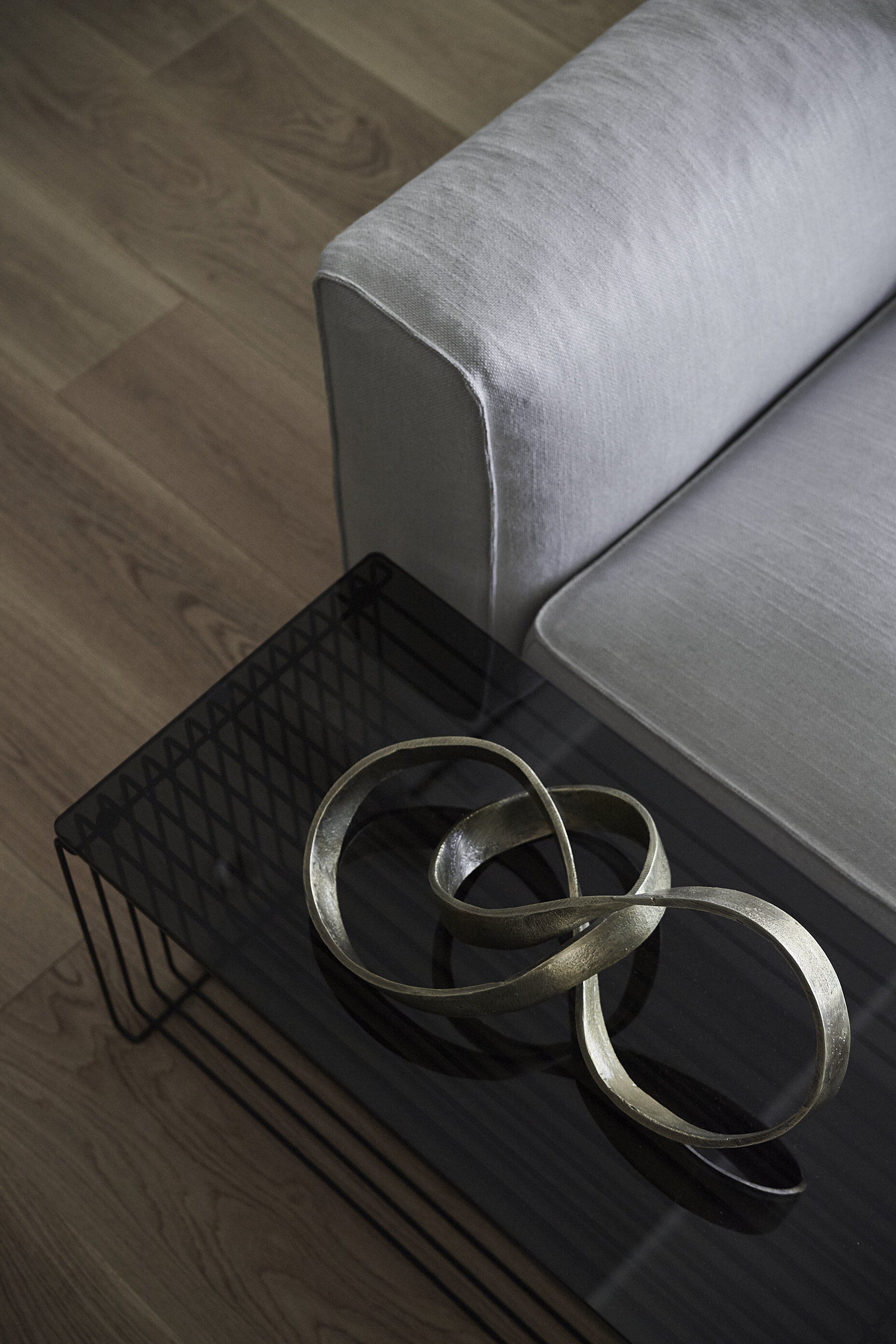
Surrender your heart to the pleasure of working with your hands.
“I'm going to get some tidying up done. If you need someone to taste test, don't hesitate to call me,” I tease before tending the cleaning. Surrender your heart to the pleasure of working with your hands.
I was born into a family of multi-generational farmers. Our lifestyle was for the most part easygoing, but after moving to Tokyo for university I became an IT enthusiast and decided to become a programmer. Now, the company I set up with my friends is doing well and has a good number of employees, so I am busy. I am not dissatisfied with this life, and it is fulfilling, but in this digital world that is constantly evolving and moving, I sometimes find myself missing the lifestyle left behind.
It was at this time that I first opened my eyes to handicrafts. Handicrafts made by concentrating on the sensations of the hands, craftsmanship learned naturally by heart, folk art and daily utensils handed down from generation to generation. When I interact with such things, I can feel the presence of people, I feel calm and relaxed. The power of the human hand, the warmth of the hand, has a power that cannot be measured by numbers.
“Would you like a taste of my beans?” my wife calls. “I'd love to!” I exclaim. “I like them a little on the soft side, don't you?” She queries. “They are boiled just right. I like them simple. In fact, I could drink to that,” I chide. “That's all you think about. It's only noon!” She teases back easily.
Symmetry
Making Time to Eat Right! Nourish your living and soul nutrition.
There was another reason for inviting our guest today. I wanted to show a friend of mine who works with antiques, this clock that I recently acquired. This clock, called "Yatagarasu", has a timeless story. The Nixie tube, once used all over the world, died out in the 1990s. The oldest digital display in history has been revived and beautifully restored by Yatagarasu! It’s a work of art created by craftsmanship and technology. As someone who works with digital technology, I was shaken when I heard this story.
“How is that clock you’re so proud of doing?” My wife calls out. “It’s perfect, Displaying the time perfectly in a beautiful orange hue.” I proudly call back.”
"Well then it's almost lunchtime. Will you set the table? She requests, eager to deliver a glorious meal. “Yes, ma'am!” I say as I hop to the task.
Today's menu is focused on colourful vegetables. We begin with ground fava bean soup, followed by spring cabbage (resembling a steak) and steamed carrots marinated in dill, sautéed mushrooms with wild rice and dried tomato sauce, orange lentils and brown rice with azuki beans. A platter of cobb salad with salted malt dressing and fried tofu croquettes and pinto beans round out the feast.
“Is this all vegan? No meat, no fish?” Our guest inquires. “Yes, it is. I'm a bit addicted these days. Please enjoy it.” I respond eager to tuck in.
I've known my friend, who runs a small gallery selling antiques and folk art, for about five years. We met when I was drawn to the Mino garment that was on display in his shop when I dropped in, and that's when I bought it. His wife is a textile artist and also my wife's dyeing and weaving teacher.
As we enjoyed the meal my friend commented, "I'm glad to see that you've kept the Date Gera (Mino garment) on display. It looks much better than when it was in the shop. You collect a lot of things, don't you? From folk tools to art, it's like a gallery.”
“Oh, a compliment from a professional,” I must admit I felt pleased by the remark. “The clock under the Mino is a bit unusual, I hope you'll take time to have a look at it later.”
It's nice to have a relaxed meal with friends who have similar tastes to your own. And I realize the importance of meeting people in person. These days we work remotely and have meetings over the screen. It's a wonderful evolution to be able to communicate in real time with people who are far away, but it's only when we meet face to face that we can truly interact.
Our guests were full of compliments after the meal.“We had so much food and it was really delicious. You are a very good cook. I would like to learn from you next time,” my friend’s wife graciously exclaimed.
“Thank you for the delicious meal, I am so full. It was beyond my expectation for a restaurant,” my friend added.
Beaming my wife replied, "Oh, thank you. It was worth the effort then. After dinner let’s have a cup of tea over there. It's not quite medicinal, but I have prepared a tea that will help your digestion after your meal.”
The comfortable place to live in Harmony
The balance of living in a natural environment and the surrounding community
I spend most of my time at work and only sleep at home. There were days like that in the past. And while I believe that this is also an important experience, I now truly feel how important it is to have a comfortable home to live in. Whether you are working or living, the temperature and texture of the air created by a place will deeply affect you. When I experience the comfort of living surrounded by things that match my wavelength, I am convinced that this is where I belong, and I feel at ease.
For me, this is living with crafts and folk art that are made by human hands and that speak to me. I was a little intimidated by that front at first, but now I feel at home. It looks like it's really comfortable.
The gentle light of early summer warmly illuminated our room.
Want to discover what is R100 Tokyo Curiosity Magazine?
Please visit https://r100tokyo.com/























